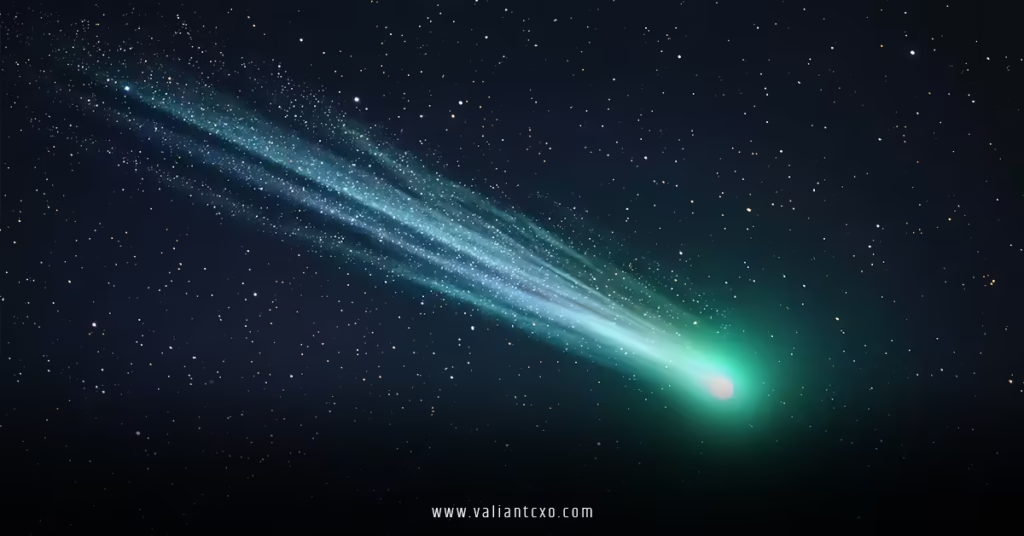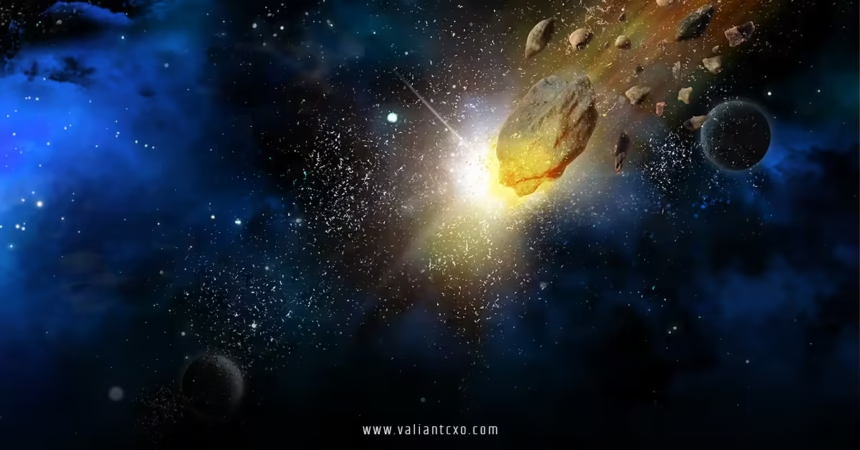interstellar comet 3I ATLAS discovery and observation details in a nutshell. This rogue ice ball from another star system crashed into our cosmic neighborhood back in July 2025, turning astronomers’ heads and sparking a frenzy of telescope time. As someone who’s always glued to the night sky, I couldn’t resist diving into the interstellar comet 3I ATLAS discovery and observation details; it’s like getting a front-row seat to a galactic road trip, complete with drama, surprises, and enough data to fill a sci-fi novel. Stick around as we unpack how this wanderer was found, tracked, and what it tells us about the universe’s hidden highways.
The Thrilling Discovery of Interstellar Comet 3I ATLAS
Picture this: a quiet night in the Chilean Andes, where the ATLAS telescope—short for Asteroid Terrestrial-impact Last Alert System—is scanning the stars for potential Earth-smackers. On July 1, 2025, it stumbles upon a faint smudge of light, magnitude 18, lurking near the border of Serpens Cauda and Sagittarius constellations. Boom—interstellar comet 3I ATLAS discovery and observation details kick off with a bang. This wasn’t just any rock; preliminary math screamed “hyperbolic orbit,” meaning it’s not orbiting our Sun but slingshotting through like a bullet from beyond.
Why does this matter? Well, we’ve only nailed two other interstellar visitors before: ‘Oumuamua in 2017 and Borisov in 2019. So, 3I/ATLAS—earning its “3I” tag for third interstellar object—feels like winning the cosmic lottery. The discovery team, led by ATLAS’s automated alerts, flagged it as a potential near-Earth object at first. Heart rates spiked; follow-ups poured in from 31 observatories worldwide, amassing 122 observations by July 2. I love how these moments blend tech wizardry with human excitement—it’s raw, unfiltered astronomy at its best.
But hold up, was it really a comet? Early interstellar comet 3I ATLAS discovery and observation details hinted at something active. No, it didn’t sprout wings or sing opera, but that faint glow suggested outgassing, like a fizzy soda shaken too hard. By July 2, the Minor Planet Center slapped on the official nod, dubbing it C/2025 N1 (ATLAS). If you’re new to this, think of it as the universe’s way of saying, “Hey, I brought a souvenir from my travels—wanna see?”
How ATLAS Spotted This Interstellar Wanderer
Diving deeper into the interstellar comet 3I ATLAS discovery and observation details, let’s geek out on the tech. ATLAS isn’t your grandpa’s backyard scope; it’s a network of four telescopes (two in Hawaii, one in Chile, one in South Africa) designed to hunt killer asteroids. On that fateful July night, the Río Hurtado station in Chile caught the comet at 4.51 AU from the Sun—about 670 million kilometers away, chilling in Jupiter’s turf. Moving at 61 km/s relative to the Sun, it was hauling ass, roughly 137,000 miles per hour. That’s faster than the fastest bullet train, metaphorically leaving Earth’s traffic in the dust.
What clinched the interstellar bit? The eccentricity: a whopping 6.14, way beyond the bound 0-1 for solar system orbits. It’s unbound, folks—like a runaway train with no brakes. Precovery digs back to May 7, 2025, via NASA’s TESS satellite, spotting activity at 6.4 AU. ATLAS itself had images from June 5-29, and Caltech’s Zwicky Transient Facility chimed in from mid-May. These retrofits extended the observation arc to 104 days by late July, solidifying the story. Isn’t it wild how one pixelated blip rewrites the sky’s guest list?
Initial Reactions and Confirmation
The interstellar comet 3I ATLAS discovery and observation details exploded across feeds like viral cat videos. Pros and amateurs alike scrambled—Lowell Discovery Telescope in Arizona, Canada-France-Hawaii on Mauna Kea, Nordic Optical—all confirming a coma and tail by July 2. That marginal 3-arcsecond elongation? Comet confirmation gold. Avi Loeb, the Harvard maverick behind ‘Oumuamua’s alien probe theory, jumped in on July 16, floating “extraterrestrial spacecraft” vibes due to its size and chems. Cue eye-rolls from the community; Scott Manley and others shut it down quick, calling it a distraction from real science. Still, it amped the buzz, drawing newbie stargazers into the fold.
By August, JWST’s data dropped bombshells: CO2-rich coma, water ice, even nickel vapors sans iron—unusual for comets. Trust me, parsing these interstellar comet 3I ATLAS discovery and observation details feels like decoding an alien postcard, but it’s trustworthy stuff from vetted sources like NASA and ESO.
Diving Deeper into Interstellar Comet 3I ATLAS Discovery and Observation Details: Early Observations
Fast-forward from the eureka moment: the interstellar comet 3I ATLAS discovery and observation details evolve into a symphony of scopes. Ground crews and space eyes locked on, revealing a tale of icy burps and dusty trails. Why obsess over these? Because they peel back layers on where this thing came from—maybe a billion-year-old relic from a low-metal disk around some distant sun.
Early vibes showed steady brightening; from May’s whispers to August’s shouts at magnitude 12. Light curves danced with a 16-hour rotation, hinting at a tumbling nucleus. Rhetorical nudge: Ever wonder what it’s like to watch a frozen time capsule thaw in real-time? That’s the thrill here.
Precovery Images and Activity Signs
Unpacking more interstellar comet 3I ATLAS discovery and observation details, precovery is the unsung hero. TESS nabbed it May 7 at 6.4 AU, showing faint activity—volatiles other than water sublimating early, like a sneaky preview. ZTF’s Palomar shots from May 22-June 21, ATLAS June logs, even Vera C. Rubin Observatory’s validation runs June 21-July 3—all pieced the puzzle pre-discovery.
This backward glance stretched the arc, nailing the hyperbolic path. Activity at such distance? Peculiar. Most comets wait till 3 AU to party; this one’s CO2 and CO kicked off sooner, suggesting a volatile cocktail from harsh cosmic rays. As a sky nerd, I find it poetic—like finding diary entries in an old book.
Ground-Based Telescopes Join the Hunt
Enter the ground pounders in our interstellar comet 3I ATLAS discovery and observation details saga. Gran Telescopio Canarias measured a 26,400 km elliptical coma July 2025; Teide’s twin scopes spotted the tail July 2. Rozhen and MDM checked polarimetry and carbons—no C2 or C3, marking it carbon-chain starved, the most depleted yet.
VLT’s July-August polarimetrics screamed “icy-dark mix,” akin to Kuiper Belt oddballs. These earthbound eyes, from Chile to Hawaii, fed the frenzy, with amateurs logging via COBS at magnitude 14.2 by September 14. It’s democratized science— you or I could’ve joined with a decent scope. Active voice alert: Telescopes didn’t just watch; they interrogated this intruder, spilling secrets one photon at a time.
The Hyperbolic Journey: Trajectory of Interstellar Comet 3I ATLAS
Now, let’s chart the course in our interstellar comet 3I ATLAS discovery and observation details. This bad boy boasts eccentricity 6.1396, semi-major axis -0.26392 AU, retrograde inclination 175.11°—fancy talk for “it’s doing laps backward at warp speed.” v∞ at 58 km/s dwarfs ‘Oumuamua’s 26; max orbital zip hits 68.3 km/s at perihelion.
Originating from Sagittarius near the Galactic Center—opposite our solar apex—it veers south, U=-51 km/s away from the bulge. Analogy time: Like a cosmic surfer riding the Milky Way’s waves, but flipped. Why retrograde? Ejection drama from a giant planet tussle eons ago.
Speed and Path Through Our Solar System
Core to interstellar comet 3I ATLAS discovery and observation details: velocity. At find, 61 km/s sun-relative; it’ll peak near October 29 perihelion at 1.3564 AU (203 million km), snug between Earth and Mars orbits. Solar conjunction October 21 blacks it out briefly, but it’ll resurface December, peaking magnitude 11.5 in Virgo-Leo.
Path’s ecliptic-hugging, appearing straightish thanks to that sky-high eccentricity. From southern skies July-September post-sunset, then pre-dawn November. Binocs won’t cut it; grab a 200mm scope for the show. I envision it as a silver bullet threading planetary needles—pure gravitational poetry.
Close Encounters with Planets
Thrills amp up with flybys in interstellar comet 3I ATLAS discovery and observation details. Mars gets the VIP treatment October 3 at 0.1937 AU (29 million km)—close enough for orbiters to snap selfies. Venus November 3 at 0.649 AU; Earth December 19 at 1.797 AU (269 million km), no sweat on collision. Jupiter March 16, 2026, at 0.359 AU.
Psyche zipped by September 4 at 0.302 AU; Juice eyes November shots. These brushes? Goldmines for comparative planetology—like comparative anatomy, but stellar.

Unveiling the Physical Secrets: Composition and Structure
Peeling the onion in interstellar comet 3I ATLAS discovery and observation details reveals a <1 km nucleus (Hubble upper limit 5.6 km), shrouded in coma up to 26,400 km wide. Reddish hue (B-V=0.98) from tholin organics, dust grains 1-100 μm ejecting at 2-22 m/s, rates ~66 kg/s total.
Coma’s fan-shaped inner bit, anti-solar tail to 100,000 km by September. Rotation 16 hours, poles possibly at RA 154° Dec +25°. No outbursts yet—steady simmer since May.
The Icy Nucleus and Glowing Coma
Heart of interstellar comet 3I ATLAS discovery and observation details: nucleus, inseparable from coma but tiny, H>15.4 mag. Coma elliptical, growing from 13,000 km June to 18,000 July; CO2 radius ≥348,000 km. Dust plume sunward, asymmetric CN coma 180,000 km. It’s a thawing iceberg, spewing confetti as solar heat bites.
Hubble’s July teardrop dust cocoon? Streaked stars from tracking the hyperbola—visual poetry.
Surprising Chemical Makeup
Chemistry steals the show in interstellar comet 3I ATLAS discovery and observation details. JWST August: CO2 emission 129 kg/s, H2O vapor 6.6 kg/s, CO 14 kg/s—CO2/H2O ratio 8, highest at 3.32 AU, bucking trends. OCS 0.43 kg/s, 13C in CO2, water ice <1 μm grains.
VLT: CN 17.6 g/s, Ni I 4.6 g/s (no Fe—odd!), HCN ramping to 2 kg/s September. Depleted C2/C3/NH2—carbon-chain pauper. High CO2? Radiation-baked or frost-line born. Like a cosmic cocktail shaken by supernovas.
Stellar Observations: Telescopes That Captured the Magic
Our interstellar comet 3I ATLAS discovery and observation details shine brightest through lenses. Hubble July 21: dust cocoon at 277 million miles. JWST August 6 NIRSpec: CO2 dominance, preprint out. SPHEREx mid-August: ice and CO2.
Ground: Gemini South water ice July, Swift UV H2O/OH July-August. JCMT HCN September. VLT cyanide/nickel August.
Hubble and JWST’s Stunning Views
Icons in interstellar comet 3I ATLAS discovery and observation details: Hubble’s teardrop, JWST’s spectra unveiling extrasolar secrets. HST programs like 17830 targeted the interloper; Webb’s Cycle 3 probed composition. These views? Windows to alien nurseries.
Mars Orbiters’ Rare Glimpse
October 3 climax: ExoMars TGO’s CaSSIS stacks 5-sec exposures, nabbing faint fuzzy blob 30 million km off—50,000x dimmer than norms. Mars Express tried 0.5-sec but unresolved. JUICE preps November post-perihelion activity spike. From Red Planet POV, it’s magnitude 11—binocular bait.
Scientific Implications from Interstellar Comet 3I ATLAS Discovery and Observation Details
Beyond spectacle, interstellar comet 3I ATLAS discovery and observation details fuel big questions. Third IO, v∞ 58 km/s suggests thick disk origin, age 7-14 billion years—older than Sol System. Low-metallicity birth (<40% solar), ejected via stellar scrap.
Challenges apex predictions; southern source flips scripts. Nickel sans iron? Unique processing. Spacecraft flyby? Mars Δv ~5 km/s feasible July-September ’25 launch.
Insights into Extrasolar Origins
Interstellar comet 3I ATLAS discovery and observation details illuminate protoplanetary disks. High CO2 breaks ices trends; depleted chains hint midplane chemistry. 25 stellar close-calls past 10 Myr—turbulent youth.
It’s a fossil from “Cosmic Noon,” teaching formation sans our bias.
Debunking the Alien Tech Buzz
Loeb’s July 16 ET craft pitch? Fun fodder, but JWST/Swift/VLT gases scream natural. Lintott, Manley, Kipping: “Distracting noise.” Consensus: comet, not probe. Keeps discourse lively, though.
What’s Next? Future Observations and Legacy
Looking ahead in interstellar comet 3I ATLAS discovery and observation details: Hubble UV November for S/O ratio; JWST December post-perihelion. Perseverance, MRO, Curiosity eye from Mars; Europa Clipper, Lucy, Psyche potential. SOHO/Juice/SOHO for solar dance.
Legacy? Boosts interstellar hunts—Rubin Observatory primed. Motivates: Grab scopes; next visitor awaits.
In wrapping the interstellar comet 3I ATLAS discovery and observation details, we’ve journeyed from Chilean hills to Martian snaps, uncovering a CO2-laced relic zipping at 58 km/s hyperbolic. This third interstellar guest demystifies extrasolar worlds, debunking ET hype while igniting wonder. As it fades post-December, remember: the cosmos knocks rarely—answer with eyes wide. What’s your next sky hunt? Dive in; the stars await your story.
Frequently Asked Questions (FAQs)
What sparked the interstellar comet 3I ATLAS discovery and observation details frenzy?
It all started July 1, 2025, with ATLAS spotting the faint mover at 61 km/s—hyperbolic orbit confirmed it as our third interstellar visitor, blending asteroid hunt with cosmic surprise.
How do the interstellar comet 3I ATLAS discovery and observation details reveal its composition?
JWST and VLT data show a CO2-rich coma (ratio 8:1 H2O), water ice, CN, and odd nickel vapors—depleted in carbon chains, hinting at a radiation-scarred, low-metal origin.
When will we see close planetary brushes in the interstellar comet 3I ATLAS discovery and observation details?
Mars October 3 at 29 million km (orbiters imaged it!), Venus November 3, Earth December 19 at 269 million km—safely distant, but prime for spacecraft peeks.
Why is the trajectory key to interstellar comet 3I ATLAS discovery and observation details?
Eccentricity 6.14 and v∞ 58 km/s prove extrasolar roots, retrograde path suggests ejection from a distant disk—older than our system, flipping origin theories.
What future insights come from interstellar comet 3I ATLAS discovery and observation details?
Post-perihelion JWST/Hubble in December will probe activity spikes; potential Mars/Jupiter flybys add layers, advancing extrasolar comet lore.
Read More:valiantcxo.com


